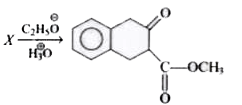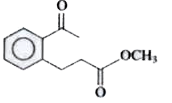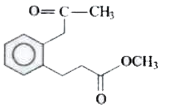The correct structure of glycine at given pH are :
H3⊕NCH2−C∣∣O−OH atpH=2.0
H3⊕NCH2−C∣∣O−OΘ atpH=6.0
H2NCH2−C∣∣O−OΘ
H2NCH2−C∣∣O−OH atpH=12
The correct Answer is:A, B, C
To determine the correct structure of glycine at various pH levels, we need to understand how glycine behaves in different pH environments. Glycine is an amino acid that contains both an amino group (-NH2) and a carboxylic acid group (-COOH).
1. Understanding Glycine Structure:
- Glycine has the following structure:
NH2−CH2−COOH
- At physiological pH (around 7), glycine exists predominantly in its zwitterionic form.
2. Cationic Form at pH 2:
- At a low pH (pH < 2), the carboxylic acid group (-COOH) is protonated, and the amino group (-NH2) is also protonated, forming a cation:
NH+3−CH2−COOH
- Therefore, at pH 2, glycine exists as a cation.
3. Zwitterionic Form at pH 6:
- At pH 6, which is close to the isoelectric point of glycine, the amino group is protonated, and the carboxylic acid group is deprotonated:
NH+3−CH2−COO−
- This is the zwitterionic form of glycine.
4. Anionic Form at pH 9:
- At a higher pH (pH > 9), the amino group remains protonated, while the carboxylic acid group is fully deprotonated:
NH2−CH2−COO−
- Thus, at pH 9, glycine exists as an anion.
5. Neutral Form at pH 12:
- At very high pH (pH 12), the amino group would also lose a proton, leading to a neutral form:
NH2−CH2−COO−
- However, this is incorrect because at pH 12, glycine would still exist primarily in its anionic form.
Summary of Structures at Different pH Levels:
- pH 2: Cationic form (NH3+ - CH2 - COOH)
- pH 6: Zwitterionic form (NH3+ - CH2 - COO-)
- pH 9: Anionic form (NH2 - CH2 - COO-)
- pH 12: Anionic form (NH2 - CH2 - COO-)
Conclusion:
The correct structures of glycine at the given pH levels are:
- Cationic form at pH 2
- Zwitterion at pH 6
- Anionic form at pH 9
- The statement regarding the neutral form at pH 12 is incorrect.
- Glycine has the following structure:
NH2−CH2−COOH
- At physiological pH (around 7), glycine exists predominantly in its zwitterionic form.
- At a low pH (pH < 2), the carboxylic acid group (-COOH) is protonated, and the amino group (-NH2) is also protonated, forming a cation:
NH+3−CH2−COOH
- Therefore, at pH 2, glycine exists as a cation.
- At pH 6, which is close to the isoelectric point of glycine, the amino group is protonated, and the carboxylic acid group is deprotonated:
NH+3−CH2−COO−
- This is the zwitterionic form of glycine.
- At a higher pH (pH > 9), the amino group remains protonated, while the carboxylic acid group is fully deprotonated:
NH2−CH2−COO−
- Thus, at pH 9, glycine exists as an anion.
- At very high pH (pH 12), the amino group would also lose a proton, leading to a neutral form:
NH2−CH2−COO−
- However, this is incorrect because at pH 12, glycine would still exist primarily in its anionic form.
- pH 2: Cationic form (NH3+ - CH2 - COOH)
- pH 6: Zwitterionic form (NH3+ - CH2 - COO-)
- pH 9: Anionic form (NH2 - CH2 - COO-)
- pH 12: Anionic form (NH2 - CH2 - COO-)
The correct structures of glycine at the given pH levels are:
- Cationic form at pH 2
- Zwitterion at pH 6
- Anionic form at pH 9
- The statement regarding the neutral form at pH 12 is incorrect.
Topper's Solved these Questions
- BIOMOLECULESBook:RESONANCE ENGLISHChapter:BIOMOLECULESExercise:Ex-2(Comprehension)Part-IV
Explore 5 Videos
- BIOMOLECULESBook:RESONANCE ENGLISHChapter:BIOMOLECULESExercise:Ex-3(IIT-JEE)Part-I
Explore 18 Videos
- BIOMOLECULESBook:RESONANCE ENGLISHChapter:BIOMOLECULESExercise:Ex-2(Single correct)Part-II
Explore 17 Videos
- BASIC CONCEPTSBook:RESONANCE ENGLISHChapter:BASIC CONCEPTSExercise:ORGANIC CHEMISTRY(BASIC CONCEPTS)
Explore 27 Videos
- BIOMOLECULES & POLYMERBook:RESONANCE ENGLISHChapter:BIOMOLECULES & POLYMERExercise:ORGANIC CHEMISTRY(Biomolecules & Polymer)
Explore 34 Videos
Similar Questions
Knowledge Check

Find correct structure of XA B
B C
C D
D

Find correct structure of EA B
B C
C DNone of these
DNone of these
Identify correct structure of A :A B
B C
C D
D
